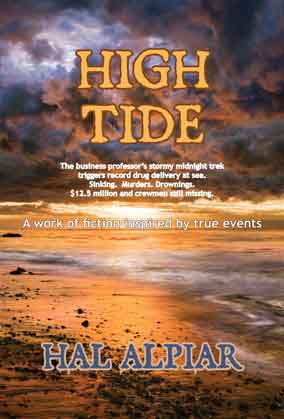May 11 2010
InsideOut Strategies
Decide what you
want to do.
Decide what you
can do.
Decide what you
will do.
When you determine what you want to do, what you can do, and will actually do INSIDE . . . then go OUTSIDE.
Too many small business owners start out thinking too big on the OUTSIDE. They march into major marketing and ad agencies, PR firms, media and branding service and management consulting companies, waving investment or borrowed money to engage services they not only can’t afford, but don’t even need to begin with.
Here’s where common sense gets lost in the shadows of egos.
You own, manage, operate a business or professional practice. You don’t need outsiders coming in and telling you what your vision or mission statement should be or how to manage your customers or employees or suppliers, or how to sell or maintain your operations.
You already know how to do these things and nobody else can do these things like you can.
You are the heart of your business.
What you see and hear and think and feel about it is your unique perspective. You can pay outsiders to pretend they get it and pretend they know essentials that you don’t. But they don’t. Until your business grows to mid-size, the only genuine and justifiable outside assistance you’re likely to need (besides perhaps technical website design and maintenance) is with creating, developing, and delivering the words you use.
Crafting your communications messages and approach is best done by a proven wordsmith who can demonstrate ability to capture the essence of your business and your “voice” (the ways you express what you think and feel about your business) and put it into appropriately persuasive language.
Your branding theme-line needs, for example, to explain what your business is all about, what you do and what you provide, tell a story with a beginning and a middle and an ending, be memorable and/or clever . . . and use seven words or less!
That kind of writing takes a special skill. Making applications of that theme-line work positively in news releases, brochures, websites, social media, direct mail and other traditional advertising forms takes a special skill.
For a small business, thinking OutsideIn —hiring a large marketing or PR or advertising agency or consulting group to attack tasks like these– is a dangerous practice. It is typically a colossal waste of money, time and energy. To make matters worse, the likelihood is that any such efforts will only succeed at winning industry awards for the “team” you recruit. Rarely if ever do these arrangements produce real sales.
Make it your first line of defense to always work your business from the InsideOut
Comment below or Hal@BusinessWorks.US
Thanks for visiting. Go for your goals! God Bless You! God Bless America, and God Bless our troops “The price of freedom is eternal vigilance!” [Thomas Jefferson] Make today a GREAT Day!


